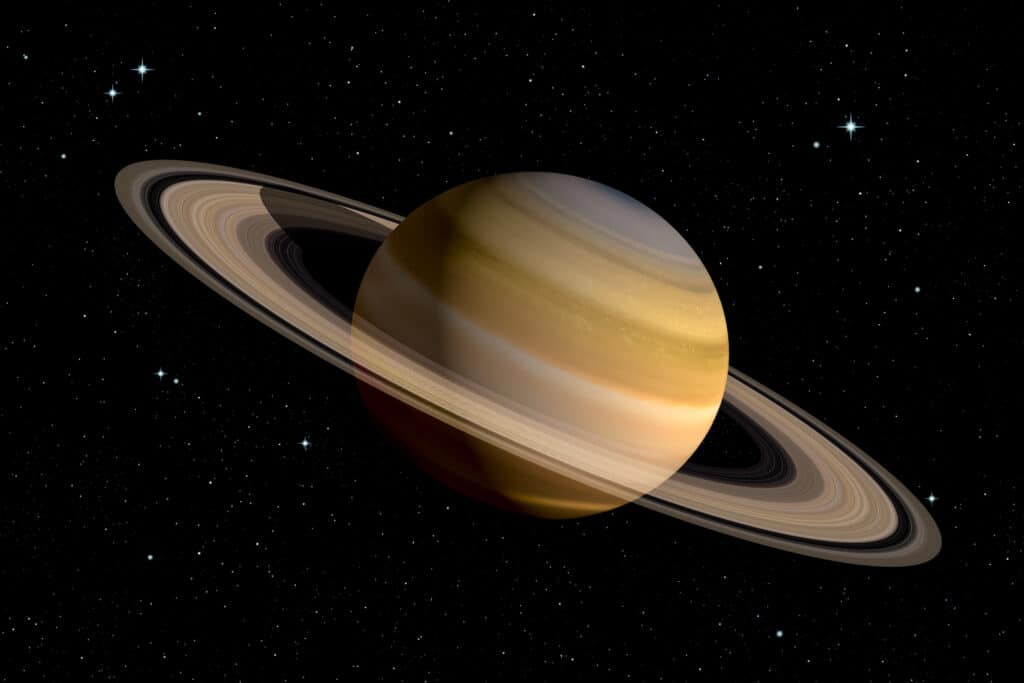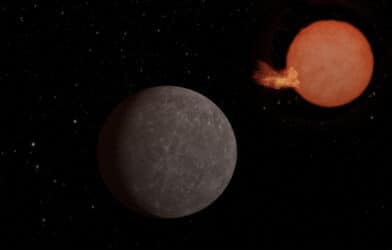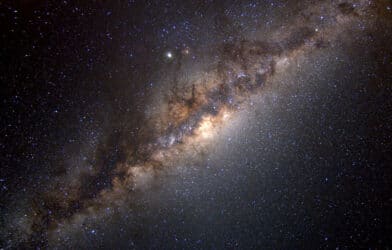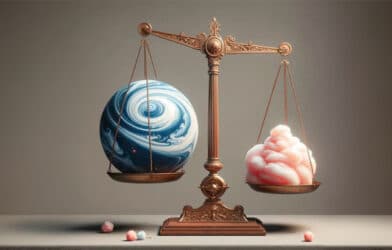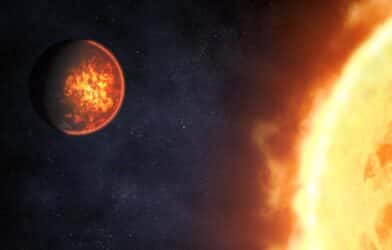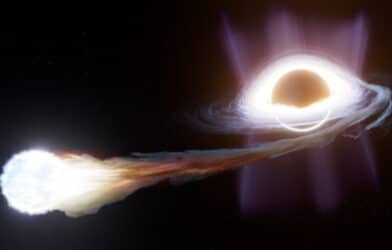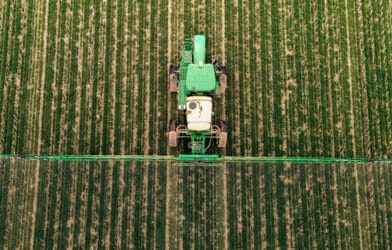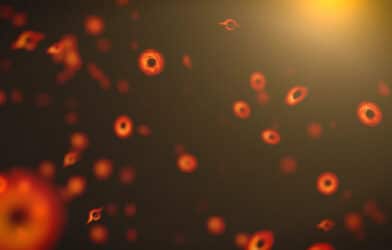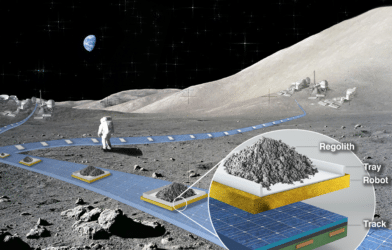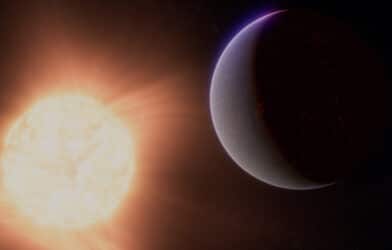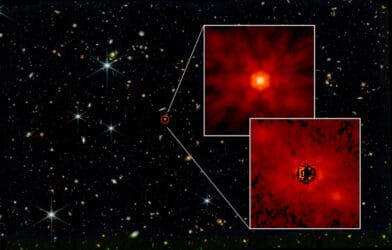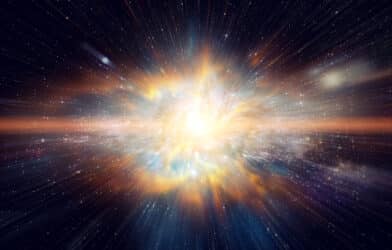New research is rewriting the history behind Saturn’s iconic rings and some of its moons. Astronomers report they might be younger than previously believed, possibly less than a few hundred million years old, thanks to supercomputer simulations. This challenges the long-standing belief that these celestial structures were formed over four billion years ago, around the same time as Saturn itself.
Saturn’s rings have been under observation for years, most notably by the Cassini mission, which has provided substantial data about their composition and behavior. These observations have shown that the rings are primarily made up of ice and are being bombarded by micrometeoroids continuously, causing the rings to lose mass and darken over time.
Recent studies estimate the current mass of the main rings to be around 0.4 times the mass of Mimas, one of Saturn’s moons. This ongoing loss of mass at a notable rate hints at the ephemeral nature of the rings, suggesting they might not only be young but also transient. The finding is crucial because it contradicts most prevailing theories about the origin of Saturn’s rings.
Some scientists propose that they are remnants of a disrupted moon or a comet that came too close to Saturn, while others believe they have been there since the planet’s formation.
Looking At Theories Behind Formation Of Saturn’s Rings
Several new scenarios have been explored to explain the possible recent formation of the rings. One such theory suggests the presence of an additional moon between Titan and Iapetus, Saturn’s moons, which could have had a close encounter with Saturn. This could have led to the formation of the rings around 100 million years ago. The scenario also accounts for Saturn’s possible alignment or “resonance” with Neptune, another gas giant in our solar system.
Moreover, Saturn’s icy moons present intriguing evidence pointing towards their recent formation. For instance, Rhea, one of Saturn’s moons, exhibits characteristics, such as its current inclination, implying that it might have formed or re-formed relatively recently. It also hints at the probability that some of these icy satellites may share a similar formation timeline with the rings.
“There’s so much we still don’t know about the Saturn system, including its moons that host environments that might be suitable for life,” says Jacob Kegerreis, a research scientist at NASA’s Ames Research Center, in a statement. “So, it’s exciting to use big simulations like these to explore in detail how they could have evolved.”
Recent simulations have helped scientists in examining various scenarios, including one which hypothesizes a dynamical instability in Saturn’s satellite system around 100 million years ago. In this scenario, the satellites or moons would experience sudden changes due to gravitational interactions, leading to collisions and forming new moons and possibly rings from the ejected debris.
However, these revelations do not entirely discard the existing hypotheses regarding the ancient formation of satellites around Saturn. They merely suggest that the precursor satellite system may have undergone destabilization and disruption to form the moons and rings we observe today.
Furthermore, simulations involving colliding moons have shown that such an impact can send substantial debris throughout Saturn’s system, and this debris can then form new moons or rings. However, more detailed studies are required to consider the presence of other precursor moons in the system and potential interactions between them.
How Celestial Collisions Tell The Story Of The Cosmos
In this latest study, researchers delved into the intriguing cosmic dance and subsequent collisions between precursor moons within the vicinity of Saturn. Utilizing the Distributed Research using Advanced Computing (DiRAC) supercomputing facility at Durham University in the United Kingdom, they developed models showing potential moon collisions using an open-source code named SWIFT.
More specifically, they deployed a computational method known as Smoothed Particle Hydrodynamics (SPH) simulations. These simulations serve as a cosmic crystal ball, unveiling the aftermath of celestial collisions.
SPH is a comprehensive simulation method allowing scientists to model and analyze high-intensity impacts between celestial bodies such as moons. It enables the representation of materials through interpolation points or “particles” to demonstrate their evolution under various forces. This method proves particularly advantageous in examining asymmetric geometries and extensive dynamic ranges in the material distribution, quintessential in analyzing chaotic impacts.
In layman’s terms, researchers use SPH to recreate the conditions of cosmic collisions in a virtual environment, providing a closer look at the underlying physics and possible outcomes of such extraordinary events.
At the heart of the study is the examination of various collision scenarios and their varying consequences. When celestial bodies collide head-on or at mid-angles, the impact is devastating, tearing apart significant chunks of ice and rock from both bodies and scattering them far and wide, both within and outside their orbital paths. This can be likened to two cars colliding at high speed, with debris flying in all directions.
On the other hand, in grazing collisions—where bodies merely “brush” past each other—the destruction is comparatively less. Especially in situations where the cores of the moons, the central parts, do not collide, the ejection of material is considerably lower. It’s akin to two cars side-swiping each other, causing lesser damage compared to a head-on collision.
The study also revealed the creation of diverse fragments from the collisions, ranging from smaller to significantly larger pieces, with some having the potential to disrupt other moons due to their substantial mass. These fragments were found to contain varying proportions of ice, depending on their mass, as more massive objects were better at retaining and reacquiring ice.
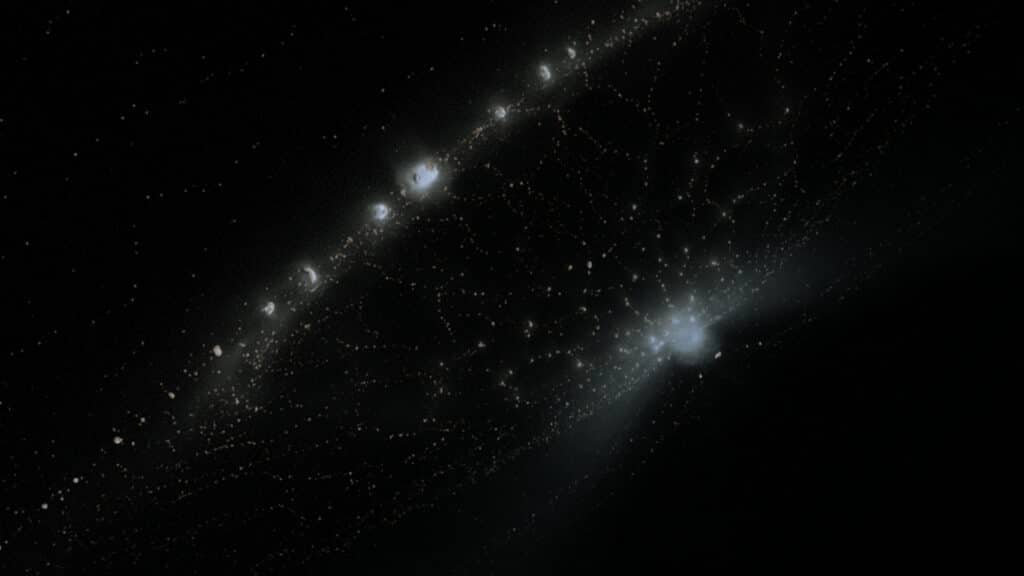
Using SPH To Better Understand Saturn’s History
When interpreting the results within the grand tapestry of the Saturn system, researchers observed the far-reaching impacts of head-on and mid-angle collisions. Such intense crashes sent debris far across the system, possibly interacting with other celestial bodies and even extending into regions near Saturn, known as the Roche limit. Here, a planet’s gravity can tear apart larger celestial bodies that come too close.
Saturn’s rings are within this Roche limit. Therefore, when simulating almost 200 versions of potential impacts, the researchers found that many could have caused enough icy debris to scatter within this limit, forming the rings. These fragments primarily consist of rock embedded in a wider field of ejected ice.
On the contrary, grazing impacts yield minimal debris, but since they only slightly alter the moons’ orbits, they leave room for more destructive collisions in the future, as the moons continue to intersect.
Collisions between moons of equivalent size show analogous results, with the produced debris’s mass closely aligning with the mass of the colliding moons. Hence, collisions involving larger moons in a precursor system could potentially create massive rings more readily.
“This scenario naturally leads to ice-rich rings,” says co-author Vincent Eke, an associate professor in the Department of Physics/Institute for Computational Cosmology, at Durham University. “When the icy progenitor moons smash into one another, the rock in the cores of the colliding bodies is dispersed less widely than the overlying ice.”
Interestingly, Saturn’s moon Rhea’s current orbit suggests it’s relatively young and didn’t experience the sun’s destabilizing effect. This aligns with the theory of Saturn’s rings forming recently.
While the study sheds light on the intricate dynamics and outcomes of celestial collisions, future research focusing on the long-term evolution of the orbit-crossing debris, along with more detailed modeling of collisions, will be crucial in solidifying our understanding. It will help refine the implications of such celestial phenomena on Saturn’s rings, its moons, their craters, and other surface conditions, painting a more comprehensive picture of the Saturnian system’s evolution and morphology.
The research is published in The Astrophysical Journal.
